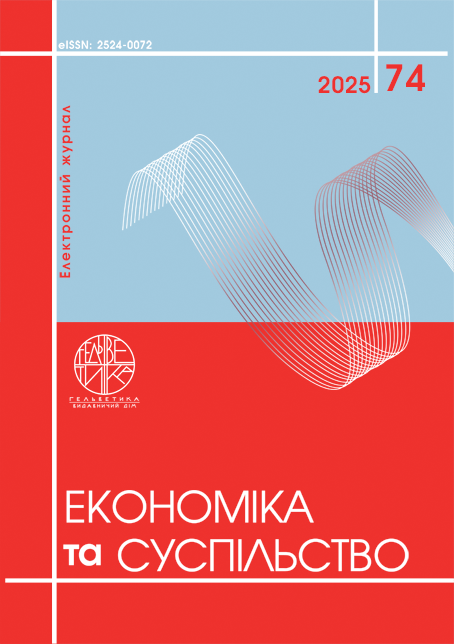DEVELOPMENT OF A METHODOLOGY FOR ASSESSING THE TRANSPARENCY OF CONSTRUCTION ENTERPRISES IN THE CONTEXT OF INDUSTRY SUSTAINABLE DEVELOPMENT
Abstract
The article discusses the methodology for assessing the transparency of construction companies, which is based on a comprehensive approach to determining the level of transparency and interaction with stakeholders. The transparency assessment involves the analysis of several key aspects of the company's activities, such as economic, environmental, social and innovative factors. Each of these aspects is assessed through a system of specific indicators, which allows determining the level of openness of the company in these areas. The main stage of the methodology is the formation of a clear structure of criteria for each of the categories. The economic transparency category takes into account such indicators as the publication of financial statements, openness regarding costs and revenues, as well as corporate governance policies. The environmental transparency category analyzes the company's responsibility for environmental protection, the efficiency of resource and waste management, as well as measures aimed at reducing the impact on the environment. Social transparency includes an assessment of working conditions, social programs for employees, as well as interaction with local communities. Finally, the innovation transparency category considers the company's investments in new technologies, scientific research and the implementation of innovative solutions. The transparency assessment is carried out by calculating the integral transparency index, which is the weighted average of the scores for all categories. This allows you to get an objective picture of the level of openness of the enterprise and identify its strengths and weaknesses in the context of interaction with stakeholders. The methodology also includes regular monitoring and updating of data to ensure dynamic assessment and adaptation to changes in legislation, industry requirements and market conditions. It not only helps to increase the transparency of the enterprise, but also builds trust from stakeholders, which is important for ensuring the sustainability and competitiveness of the enterprise in the market. As a result of applying this methodology, construction companies can identify weaknesses in their activities and determine priorities for improvement within the framework of sustainable development strategies.
References
Візіренко С.В., Незнамова А.М. Транспарентність фінансової звітності як запорука інформаційного забезпечення стейкхолдерів. Сталий розвиток економіки. 2019. 4[45]. С. 136-141. URL: https://surl.li/ythabz (дата звернення: 23.05.2025).
Nalyvaiko L., Marchenko O., Ilkov V. Conceptualisation of the phenomenon of corruption: international practices and Ukrainian experience. Economic annals-XXI. 2018. №. 172. Р. 32-38.
Халіна В.Ю., Сироватський О.А. Транспарентність діяльності будівельного підприємства як детермінант довіри стейкхолдерів. Економічний простір: Збірник наукових праць. 2020. № 155. С. 74-80.
Богуцька Л. Реалізація принципів транспарентності суб’єктами господарювання. Вісник Тернопільського національного економічного університету. 2017. № 4. С. 149-158. URL: https://surli.cc/oprkvl (дата звернення: 23.05.2025).
Мельник Н. Транспарентність обліку як складова сприятливості ведення бізнесу в Україні. Бухгалтерський облік і аудит. 2015. № 4. С. 10-17.
Зайцева А.С. Концептуальні основи управління транспарентністю розвитку підприємств в умовах конвергенції інвестиційних процесів. Бізнес Інформ. 2024. №3. URL: https://www.business-inform.net/export_pdf/business-inform-2024-3_0-pages-263_270.pdf (дата звернення: 23.05.2025).
Ляхович О.О., Скаковська С.С., Кречко М.Ю. Сутнісна характеристика транспарентної діяльності підприємства: переваги та недоліки. Наукові записки Національного університету «Острозька академія». 2022. № 25(53). С.31-38.
Халіна В.Ю., Абєлєнцев Є.В. Транспарентність діяльності підприємства як елемент нової бізнес-моделі. Науковий журнал «Інтернаука». 2023. 16. URL : https://www.inter-nauka.com/issues/2023/16/9256 (дата звернення: 23.05.2025).
Халіна В.Ю., Абєлєнцев Є.В. Транспарентність будівельних підприємств в умовах розвитку цифрової економіки міста. Підприємництво і торгівля. 2023. № 39. URL: http://journals-lute.lviv.ua/index.php/pidpr-torgi/article/view/1502/1413 (дата звернення: 23.05.2025).
Vizirenko S., Neznamova A. (2019). Transparentnist finansovoi zvitnosti yak zaporuka informatsiinoho zabezpechennia steikkholderiv [Transparency of financial statements as a guarantee for stakeholders information support]. Stalyi rozvytok ekonomiky. 4(45), 136-141, URL: https://surl.li/ythabz (accessed May 23, 2025).
Nalyvaiko L., Marchenko O., Ilkov V. (2018). Conceptualisation of the phenomenon of corruption: international practices and Ukrainian experience. Economic annals-XXI. №. 172. Р. 32-38.
Khalina V., Syrovatskyi O. (2020). Transparentnist diialnoisti budivelnoho pidpryiemstva yak determinant doviry steikkholderiv [Transparency of construction enterprise activity as a determinant of stakeholder trust]. Ekonomichnyi prostir: Zbirnyk naukovykh prats. no. 155. pp. 74-80 (accessed May 23, 2025).
Bohutska L. (2017) Realizatsiia pryntsypiv transparentnosti subiektiv hospodariuvannia [Implementing principles of transparency in business entities]. Visnyk Ternopilskoho natsionalnoho ekonomichnoho universytetu. vol. 4, pp. 149-158. URL: https://surli.cc/oprkvl (accessed May 23, 2025).
Melnyk N. (2015). Transparentnist` obliku yak skladova spry`yatlyvosti vedennya biznesu v Ukrayini [Accounting transparency as a part of the ease of doing business in Ukraine]. Bukhhalterskyi oblik i audit. 4. Р.10-17.
Zaitseva A.S. (2024) Kontseptualni osnovy upravlinnia transparentnistiu rozvytku pidpryiemstv v umovakh konverhentsii investytsiinykh protsesiv [Conceptual foundations of transparency management of enterprise development in the context of convergence of investment processes]. Biznes Inform. 2024. №3. URL: https://www.business-inform.net/export_pdf/business-inform-2024-3_0-pages-263_270.pdf (accessed May 23, 2025).
Liakhovych O.O., Skakovska S.S., Krechko M.Iu. (2022). Sutnisna kharakterystyka transparentnoi diialnosti pidpryiemstva: perevahy ta nedoliky [Essential characteristics of transparent enterprise activities: advantages and disadvantages]. Naukovi zapysky Natsionalnoho universytetu «Ostrozka akademiia». 25(53). Р.31-38.
Khalina V., Abielientsev Ye. (2023). Transparentnist diialnosti pidpryiemstva yak element novoi biznes-modeli [Transparency of enterprise activity as an element of a new business model]. Naukovyi zhurnal «Internauka». 16. URL: https://www.inter-nauka.com/issues/2023/16/9256 (accessed May 23, 2025).
Khalina V.Iu., Abielientsev Ye.V. (2023) Transparentnist budivelnykh pidpryiemstv v umovakh rozvytku tsyfrovoi ekonomiky mista. [Transparency of construction companies in the context of the development of the city's digital economy. Entrepreneurship and trade]. Pidpryiemnytstvo i torhivlia. 2023. № 39. URL: http://journals-lute.lviv.ua/index.php/pidpr-torgi/article/view/1502/1413 (accessed May 23, 2025).

This work is licensed under a Creative Commons Attribution 4.0 International License.


